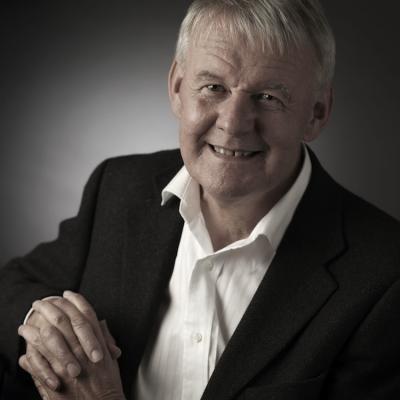© Copyright 2025 Peter Hill. All rights reserved.

It’s always been a puzzle that the life of Olivier Messiaen (1908–92) contains one year – 1961 – with a complete absence of composition. Messiaen, after all, was a composer who never took a holiday (as his widow, the pianist Yvonne Loriod, once explained to me), and who could compose music under the most adverse circumstances – the Quartet for the end of Time, for example, was created when a prisoner-of-war in 1940. So a year with nothing composed, and no work on a major project, is unique in Messiaen’s long career. Now we have the answer, that in 1961 Messiaen’s summer vacation – the period in the year set aside for composition – was dedicated to a substantial work for solo piano.
The piece came to light in 2012 when I was reviewing the hundreds of photocopies I’d made ten years ago when working in the Messiaen apartment in Paris on the composer’s papers. Among the photocopies were several pages of what appeared to finished music, though written in faint pencil and very hard to read. I made a start on seeing if these could be deciphered, and became more and more intrigued. What began to emerge was a musical draft in an advanced state of completion, with not only the notes but also markings of dynamic, touch and pedalling, and even the fingering. The music was reminiscent of Messiaen’s huge piano cycle on the birds and birdsongs of France, Catalogue d’oiseaux (1956–58), but featuring as its principal soloist a bird new to Messiaen’s music, the fauvette passerinette, or subalpine warbler, based on notations made by Messiaen in the arid ‘garrigue’ landscape west of Montpellier.
As the piece took shape a form began to reveal itself, with three sections for the soloist set in a context of other birdsongs that occupy the middle part of the piece. The outer sections are complete in every way. The central section is more fragmentary with the order of events determined by an alphabetical scheme, typical of Messiaen’s method of composing. The latter part of this passage required some detective work because it is in composer’s shorthand, with only the harmonies in place. Luckily, Messiaen had noted what these chords were to represent – a flock of six great spotted cuckoos. I made a trip to Paris to search through Messiaen’s birdsong notebooks, and had a ‘eureka’ moment when I found the notation that perfectly matched the harmonies in the sketch, enabling me to supply the missing dynamics, rhythms and articulations. The result is remarkable: fast, rhythmical and ruthless, and unlike anything else in Messiaen.
The result of this research is a substantial addition to the repertoire and a virtuoso challenge to the pianist. It also tells us much that we didn’t previously know about the development in Messiaen’s thinking. Among its many novel features is the way the music develops, with the main soloist, the fauvette passerinette, borrowing characteristics from the other birdsongs. Also new is the style of the birdsong, much more richly harmonised than in Catalogue d’oiseaux, and looking forward to Messiaen’s later music, as in La Fauvette des jardins for solo piano (1970) or the birdsong in Messiaen’s opera Saint François d’Assise (1983).
Perhaps the most radical innovation is the way Messiaen dispenses with the scenic props that had been such a feature of Catalogue d’oiseaux – musical evocations of place and time of day (darkness, sunlight) in which the birdsong is embedded. In La Fauvette passerinette Messiaen creates his structure from birdsong alone, using the birds to confront or (at times) to imitate one another, in a kaleidoscopic juggling of their characteristics: near-far, similar-dissimilar, active-passive, fluid-monumental, and poetic-aggressive – plus, of course, vivid contrasts of character (Messiaen experienced birds as having almost-human personalities). The precedent is Chronochromie (1959–60), the orchestral masterpiece that had climaxed a decade of working exclusively with birdsong (since the pioneering Le Merle noir, for flute and piano, of 1951). Chronochomie has an eclectic international cast of birds, and an underlying structure that replaces the natural settings of the Catalogue with an abstract rhythmic scheme, which is clarified and ‘coloured’ by the birdsong. But unlike Chronochromie there is no such scheme in La Fauvette passerinette. Instead, the most important structural innovation is the way the fauvette passerinette itself undergoes transformation. Its music begins in a lyrical but lively style that becomes increasingly hard-edged – developing in a purposeful way that absorbs motifs from the other birdsongs in its habitat. As a result, the final section is both virtuoso finale, a thrilling toccata that rampages towards the finish, and a recapitulation that ties together all the birdsong motifs heard in the piece.
The dating of La Fauvette passerinette to 1961 not only fills the gap in our knowledge of Messiaen’s music, but also makes perfect sense. In the wake of the completion and premiere of Chronochromie, and finding himself at a loose end, Messiaen may well have intended to compose a second ‘catalogue of birds’ to go with the earlier cycle – Messiaen maintained that he’d always meant to do this, but had never had the time. If La Fauvette passerinette was indeed the start of a second birdsong cycle, it was overtaken by events. By the end of 1961 Messiaen was occupied with plans for an orchestral work for Debussy’s centenary in 1962, and soon afterwards three more important commissions came his way, for Couleurs de la Cité céleste (1964), Et exspecto resurrectionem mortuorum (1965) and La Transfiguration de Notre Seigneur Jésus-Christ(1969). Given the pressure of work, it’s not difficult to imagine how La Fauvette passerinette, the first of a new ‘catalogue of birds’, became sidelined and ultimately forgotten. Now, more than half a century after its composition this glittering piece can at last take its place in the repertoire.